
Eggs are my fav food. I can eat them for every meal of the day, every day, and I do – and still haven’t gotten sick of them yet! There’s a running joke about it between me and my mom – how if we could only eat one food for the rest of our lives, eggs would be it! They’re so nutritious and sustaining, and versatile, and great for breakfast, snack, lunch, or supper.
When it comes to serving eggs to babies and toddlers, there can be a lot to know. When do you introduce it, why should you introduce it, how do you introduce it, how often do you introduce it…but also… there are so many types of eggs out there that leave you questioning whether you should be choosing one type over another, and if it even makes a difference. We’ll go through all of that so it’s nice and clear for you, but if you prefer to listen instead of read – check out my podcast on this topic!
Why I love eggs for babies and toddlers!
I personally love eggs for babies and toddlers and I actually recommend eggs as one of the first foods to introduce! I have a blog and podcast episode on the top foods for starting solids, and eggs definitely make the list. Eggs are high in iron – and we want to start getting babies used to eating high iron foods frequently, right from day 1, since they need supplemental iron (aka iron from their diet) to meet their needs. As much as breastmilk is amazing, it is not…I repeat…it is not sufficient to meet iron needs, so having an iron source at every meal to ensure their very high iron needs are met, is very, very important.
Eggs are also a soft texture and work great for new eaters just learning how to chew and mash foods. Whether doing baby led weaning or puree feeding, you can manipulate the texture of the egg to meet your baby wherever they are along the Texture Timeline™ (my signature tool to help babies advance in textures in a timely manner – see more in this podcast episode here and blog posts here and here). Eggs are a great creamy texture – one of the textures I recommend introducing baby to after they’ve already mastered thin and smooth foods, like purees, and are ready for a little more sensory stimulation, without the need for heavy chewing. So it’s perfect as a transition food into the rest of the world of varied and more advanced textures.
Eggs are also one of the top 10 highly allergenic foods, which means, it’s a food we recommend offering early on and often. This is something that we’ve seen reduces the risk of developing allergies later in life, specifically for eggs and peanuts – but we extrapolate that data for other allergenic foods as well. Now, both the egg white and yolk are technically two different allergens, but because you can’t properly separate the two, we consider the whole egg to be one allergen and introduce both the egg white and the yolk at the same time. Also, because eggs are found in so many recipes, I like to rule out an allergy to eggs first before most other allergens, ‘cause if it’s cleared, then it opens up a whole slew of recipes you can offer to your baby. Just makes meal planning so much easier!
Eggs are also a nutritional powerhouse – outside of just iron (of which there’s about 0.875 mg per egg). Every egg provides about 6.5 g of complete protein, meaning it contains all 9 essential amino acids. These amino acids are ones we can’t produce in our body and therefore need to get them from our diet – so eggs do that for us. Each egg also provides about 5.5 g of fat – a very required nutrient for all of us, but especially for babies and toddlers who need lots of energy from fat to sustain them. The yolk is actually where all the delicious good-for-you fat is, as well as fat soluble vitamins like Vitamin A, D, E and also antioxidants like lutein and zeaxanthin. It also contains: 32.5% of an adult’s Vitamin B12 needs, 66.5% of biotin needs, and 37.5% of choline needs. Choline is an important nutrient for brain development and is especially important for babies and toddlers because their brains grow so much over the first three years of life. So, you can see it’s an extremely well-rounded food and just needs a little carb-rich food on the side to make it a complete meal.
Distinguishing between the different types of eggs
Brown vs white eggs: The colour of an egg is based on the breed of the hen. Although you might find there is a slight difference in price, this is due to the difference in cost to raise different breeds. For example – some breeds require more feed than others. However, there is no difference in quality, taste, or nutritional value between brown and white eggs.
Conventional egg: Conventional caged eggs are the run of the mill eggs you find in the grocery store. They’re the least expensive of all eggs. The hens that lay these eggs have been raised in small cages, in very tight living quarters. While they’re regularly inspected, as in the cages are kept clean and the hens have unlimited access to clean water and food, in Canada, this type of housing is being phased out in order to improve animal welfare and therefore we are moving to enriched colony housing instead, so that the hens can live a less stressful life, and exhibit more natural behaviour.
Enriched housing or enriched colony eggs: These hens are offered slightly more space in cages per bird, and cages are equipped with things like nest boxes, perches, and scratch pads so that the hens can express more of their natural behaviour.
Cage-free eggs: Cage-free eggs mean that the hens from which the eggs came from weren’t confined to cages. This title encompasses three sub-categories of eggs: free-run, free-range, and organic. They don’t have access to the outdoors, and there are no stipulations around what feed or medications they’re given – which by the way – means that there will be no nutritional difference in these types of eggs compared to conventional ones.
Free-run eggs: The hens that produce these eggs are able to roam an open-concept barn floor. Some of these barns may be equipped with multi-tiered aviaries with perches, food, and water at different heights throughout the barn. They don’t necessarily have access to the great outdoors, and although populations are regulated, crowding may still be an issue. There are no stipulations around what feed or medications they’re given.
Free-range eggs: These eggs come from hens that roam the barn floor much like free-run eggs, but in addition, can go outside to pasture at least 120 days a year (minimum of six hours per day, and note that outdoor access is only seasonally available in Canada). In addition to their feed, hens are able to eat what they find outside and on the barn floor. Again, there are no stipulations around what feed or medications they’re given. We don’t have any evidence showing that free-range, or any cage free eggs, are better for you or are nutritionally different. It’s more about supporting farmers who are creating more humane conditions for their birds.
Organic eggs: These eggs are produced under specific standards laid out by the Canadian General Standards Board and certified by a reputable organic certification board. All certified organic eggs, in Canada, are produced in free-range operations. However, the hens have even more space for roaming, and are fed certified organic feed. Certified organic labels often require the use of organic feed without antibiotics. Some eggs are labelled “no hormones added” – this is nothing but a marketing scheme since no hormones have been approved for use in poultry production in both the US and Canada. We have some minor evidence showing that organic eggs have a nutritionally different composition than conventional eggs and omega-3 enriched eggs. Namely that they had slightly higher protein, potassium, and copper levels. Conventional eggs contained higher magnesium and iron, and the omega-3 eggs contained higher manganese and calcium. Essentially, change the feed and the nutrition of the eggs changes as well, but it doesn’t necessarily make organic eggs better, just different in the amount of nutrients they supply the body.
Pasture-raised: Pasture-raised is not a regulated term, however, it typically implies hens are raised outdoors, based on time of year and location, and kept in shelters which help to protect from predators. Shelters are rotated on different areas of pasture daily so the hens can forage for a larger portion of their food, from their natural diet, which includes grass, seeds, green plants, insects, and worms.
There is some minor evidence showing that pasture-raised eggs have more Vitamin E, Vitamin A, but mostly more omega-3’s and a better overall omega-3 to omega-6 ratio than conventional eggs (which matters nutritionally because omega-6 fatty acids are more likely to cause inflammation in your body). However, this research isn’t enough to form any solid conclusions. If you can afford pasture-raised eggs, purchasing them for a potentially added and slight nutritional advantage, coupled with your desire to support the most humane and natural treatments of the hens – then I say go for it!
Omega-3 fortified: Omega-3 enriched eggs are produced by hens that are fed a special diet rich in flaxseeds, and some brands, like Naturegg Omega Plus eggs, even add fish oil, which results in the eggs having a higher Omega-3 and DHA content. DHA is the most important kind of omega-3 fats, especially for babies and toddlers who need this to support their rapid brain growth. Most common brands found in grocery stores supply 76 mg DHA for every two eggs, while omega-3 fortified eggs contain 150 mg DHA for every two eggs, while the Naturegg “plus” line contains 250 mg of DHA for every two eggs! While there’s no official RDA (Recommended Dietary Allowance) for DHA, years of research have given a fairly good idea of amounts for general health:
- Children (ages 1-18): 100-150 mg DHA/day
- Adults: 250-500 mg DHA/day
So adding omega-3 eggs to you or your child’s diet is a great way to get those much needed DHA fatty acids, especially if you’re not able to get it via 2 servings of fatty fish or a seperate supplement. Make sure to listen to my podcast episode from last week on the best, safe fish for babies/toddlers, where I break down the fish that are high in DHA and how much is required per week to meet needs.
Vitamin-enhanced eggs: These eggs have more Vitamin E, Vitamin B12, and folic acid than regular eggs. The hens are fed a traditional feed that contains higher levels of certain nutrients.
Vegetarian fed: This means that the chickens are fed a no-meat/no-fish, organic, vegetarian-based diet, even though bugs and worms are part of their natural diet. This guarantees there are no animal byproducts, or questionable ingredients, in the hen feed. This may be important to someone following a vegetarian diet, however there is no nutritional benefit to it.
Processed eggs: These eggs are Grade C eggs broken by special machines and pasteurized. They’re then further processed, and packaged in liquid, frozen, or dried form. Just for quick explanation, there is nothing wrong with Grade C eggs…in Canada. The Canadian grading process checks the condition of the shell, the position of the yolk, and the size of the air cell inside the shell. Grade A eggs can be sold at retail, while Grade B eggs are often used for commercial baking, and Grade C eggs are used in the production of processed egg products. It’s basically about the aesthetic of the eggs.
So bottom line – no matter what type of egg you decide to buy, know that you’re getting the same nutrition, with the exception of vitamin or omega-3 fortified feeds which you may want to consider based on your family’s diet. Ultimately though, choosing which one is best for your family is mainly dependent on your commitment to animal welfare standards.
Do you need to wash eggs? Do you need to refrigerate eggs?
American and Japanese mass egg producers all wash their eggs before putting them out for retail purchase so they look and feel clean. But washing them removes the outer protective film on the shell that prevents it from being porous and potentially leaving room for bacterial invasion. As a result, they are then sprayed with a coating of oil and refrigerated to keep any bacteria from developing on them. Once they’ve been refrigerated, you need to keep them refrigerated at home so that they don’t sweat and get moldy, and therefore they last longer. So, if you live in North America or Japan, washing eggs isn’t required, but you should refrigerate them.
If you live in Europe or other Asian countries outside of Japan, egg washing is just done at home to clean them up, and then use them right away.
How many eggs can my baby/toddler have in a day? Per week?
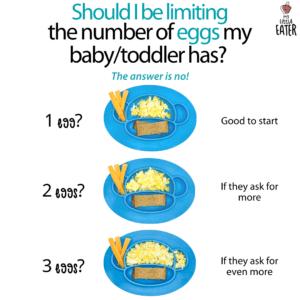
There is no limit! Many are still in the mindset that eggs cause high cholesterol levels, or that the saturated fat in them is “bad”. Research shows us that there is no link between eating eggs and an increased risk of heart disease. Obviously, we don’t want your child eating mainly eggs and not leaving room for other types of food in their diet. We want variety in general, but if they want to eat 1,2, 3, or 4 eggs in one sitting – let them go for it!
How to serve eggs at different ages
6 months – 1 year:
The yolk should be cooked through, meaning you can serve over-hard, boiled, scrambled, or baked eggs to your baby. Runny yolk shouldn’t be offered before age 1 due to potential salmonella contamination (technically Health Canada and the CDC say not until age 5. My personal opinion…that’s a bit excessive if purchasing retail eggs and see the risk as being so extremely low and not worth not exposing your toddler to runny yolks until then).
The one exception are eggs marked with the “British Lion” stamp, which are found in the UK and Europe. These indicate the hens had higher standards of care and were vaccinated against salmonella. If you are able to get your hands on these, depending on where you live, you don’t have to worry about serving eggs with yolks that are a bit runny.
Best way to start servings eggs for babies 6-9 months:

In the earlier days of starting solids, I like to start with textures that are a bit easier for babies to chew and which pose less of a choking risk. I also focus on serving eggs in ways that are easy for babies to hold using palmar grasp. It’s not to say that you can’t offer eggs in other ways to your baby during this time frame, but don’t be surprised if it’s harder for your baby to pick up.
Baby omelette
Nothing’s easier for babies, and parents, than a baby omelette. Essentially, it’s a regular omelette, but I like to whisk in some milk (either dairy milk, a dairy milk alternative, or breastmilk/formula) to the eggs before cooking on the pan so it turns out extra fluffy and moist. Cut the omelette into strips when serving so they can easily grab it and suck on it, or take bites out of it.
egg puff/egg in a mug
This was something my husband used to make for our kids every morning, especially when in a rush ‘cause it was so quick and easy. Basically, this is a foolproof way to get moist, fluffy eggs for your baby – sort of like a souffle. Check out the recipe below for how to make it!

Ok – so these aren’t actual muffins – but they’re baked in a lined/greased muffin tin and so that’s what we call them! Very similar to the eggs in a mug recipe, there are many variations for flavours and add-ins. You can find my favourite recipe for these inside my 30 day Baby Led Feeding meal plan, which is included in my baby course until March 31, 2021!
Mashed boiled egg with milk/yogurt/avocado
As simple as it sounds, hard boil some eggs and mash it up with the back of a fork. Then mix it into a purée, add some milk in it, or add some yogurt to it to add moisture to the egg and make it easier for your baby to chew/swallow. You can spread the mixture onto some toast fingers, or put it on a preloaded spoon for them to self-feed.
Over-hard eggs
Another no-brainer – simply fry an egg on both sides until the yolk is fully cooked through. Cut it into strips for your baby to hold and take bites out of!
Best way to serve eggs to baby 9-12 months old:

Scrambled egg
Although these are very soft and easy for new eaters to chew, because it’s harder to pick up with palmar grasp, I recommend offering scrambled eggs on its own once their pincer grasp has developed.
cooked and minced
Let your baby practice their pincer grasp by mincing up cooked eggs (cook any way – boiled, fried, omelette, etc.)
boiled eggs (sliced)
When first introducing boiled eggs to your baby, starting with thin vertical slices (using an egg slicer like this) is the best way to introduce this rubbery, and more dry-textured egg.
boiled eggs (wedges)
After your baby has had a bit of practice with boiled, sliced eggs, go ahead and offer a boiled egg wedge!
Considerations when serving eggs to babies and toddlers
Variety is key
When serving eggs (or quite frankly – any food), we tend to fall into the habit of serving it the same one or two ways over and over again. But with all that we know about preventing picky eating, offering as much variety as possible is the best way to prevent strict, no-budge, preferences. For example, my boys were only served boiled eggs at Easter, at my parents’ house. At home, I never made them because I don’t particularly like boiled eggs. I’ll eat them…but truly not my favourite. My husband and I are over-easy/poached/scrambled/omelette type people. Guess how hard it was to get my kids to eat boiled eggs when we were away, or on a road trip, and I needed easy and convenient high protein foods to feed them? Super hard. Took me two years to get them to start eating boiled eggs after more deliberately putting them on our meal plans. I realize that this was an oversight on my part, and therefore make this recommendation based on what I learned the hard way!
Now that’s not to say that everyone has to like every single way of serving eggs. But if you only (or mostly) serve scrambled, or only serve boiled, or only serve egg muffins – don’t expect your baby/toddler to love all the other types of eggs. My advice is to keep as much variety as possible in all your meals, and focus on variety for all your food. Because once one or two things start dropping off their favourites list…you need other options to fall back on while you work on getting them to eat those foods again. It also just makes their life, and yours, so much easier.
So, serve eggs in different ways for variety: boiled, scrambled, fried over-easy (once they are 1+ years old), over-medium, over-hard, omelette, egg muffin, in an egg salad, diced small, large diced, wedges etc.
Don’t stress over small amounts eaten
Toddlers only need 2 servings from the meat & alternative category to meet protein needs…and just one egg counts as 2 servings! That means, that if your toddler eats one egg, and no other meat, beans, or other high protein/iron food that day – they’ve met their needs! So don’t worry and think “my toddler only ate ½ an egg…that’s not a meal!” or “they only took two bites…what a failed meal”. Remember – eggs are so nutrient dense, and kids are so great at balancing their nutrient needs over time. Enjoy the fact that eggs are probably the easiest way to get much needed nutrition into them.
Eggs aren’t just a breakfast food
We typically think of eggs as just a breakfast food, but remember, eggs make for an amazing snack or lunch/dinner meal. “Breakfast for dinner” is one of my favourite meals to make when I’m just not feeling like cooking much. They’re also so easy to prep ahead (boil) and keep in the fridge for upwards of 5 days. You can then easily grab these to quickly use as a snack or fast meal for babies/toddlers throughout the week on busy days while keeping your feeding schedule intact. And they’re excellent, portable foods that are easy to keep in a cooler when on-the-go, and that don’t require heating up before eating. So let them show up in different meals throughout the day, and again, keep the variety coming.
If you’d like more info on all of your baby or toddler’s nutritional needs, and how to serve them food from when they start solids, all the way up to 6+ years old, take a look at my Baby Led Feeding and Feeding Toddlers courses! I walk you through this whole journey, every step of the way, and provide you with ongoing support throughout.
References:
- https://pubmed.ncbi.nlm.nih.gov/28339969/
- https://www.cambridge.org/core/journals/renewable-agriculture-and-food-systems/article/abs/vitamins-a-e-and-fatty-acid-composition-of-the-eggs-of-caged-hens-and-pastured-hens/552BA04E5A9E3CD7E49E405B339ECA32
- https://www.npr.org/sections/thesalt/2014/09/11/336330502/why-the-u-s-chills-its-eggs-and-most-of-the-world-doesnt
- https://www.canada.ca/en/health-canada/services/food-safety-vulnerable-populations/food-safety-information-children-ages-5-under.html
- https://www.cdc.gov/foodsafety/communication/salmonella-and-eggs.html



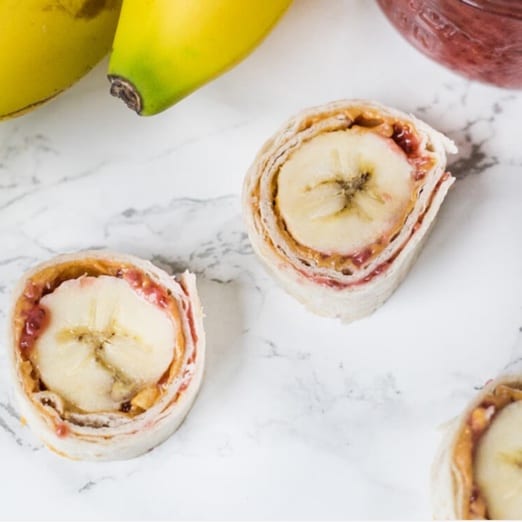

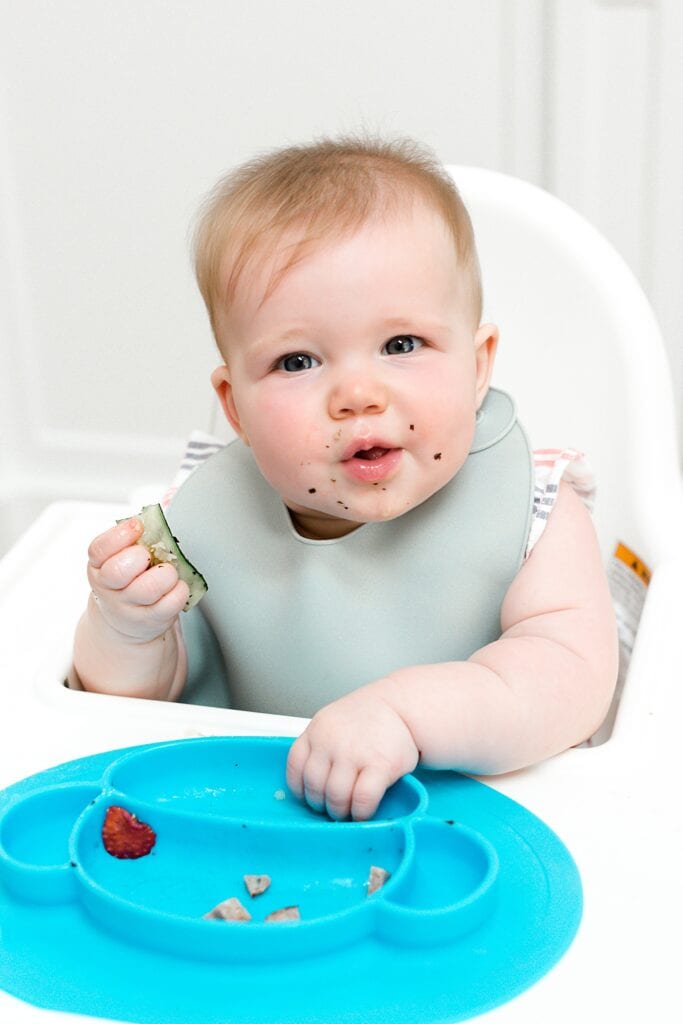
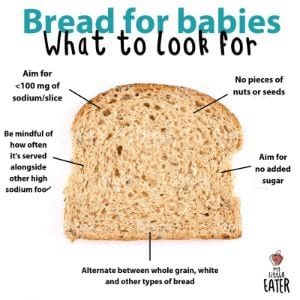
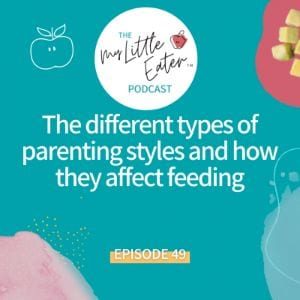
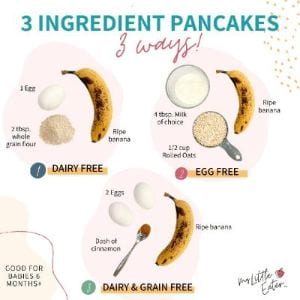
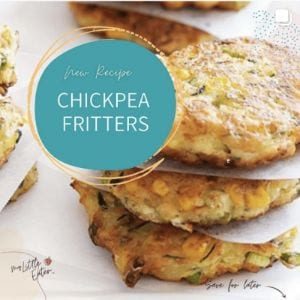
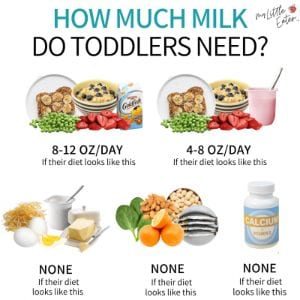
One Comment
I do not recommend sliced eggs as they can get caught in the babies throat if they don’t chew them. The size isn’t good at all. Please consider revising this otherwise valuable article.